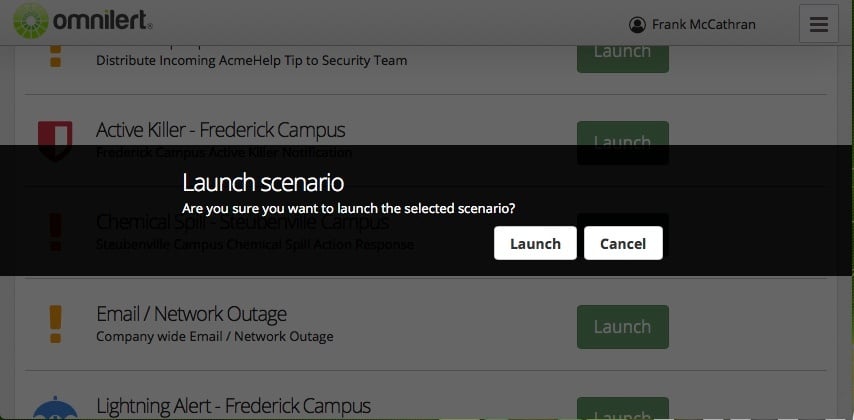As an industry leader in emergency notification, one would imagine that we were swamped with inquiries related to the false missile warning in Hawaii and Japan; and more recently with the active shooter ‘false alarm’ at the Walter Reed Army Medical Center in Bethesda, Maryland. We were. Whether the questions came from the media, customers who have implemented our solutions, or organizations planning to implement Omnilert, the inquiries were unified in theme.
All of them centered around best practices related to issuing alerts, warnings, and notifications:
- – Why wasn’t there a ‘confirmation to send’ capability or process?
- – Why did it take so long to send a cancellation, retraction, or all-clear notification?
Although we may never know the complete story for either high-profile false alert incident, the answers related to best practices are clear. All organizations should use this as an opportunity to evaluate their emergency notification and critical communication systems to ensure they have these most basic best practices employed to diminish the chances of the same thing happening to them.
Confirmation to Send Notification
We all agree that timeliness of sending emergency notifications is critical. However, they must also be accurate. Within any legitimate emergency notification system on the market today, having the capability to review the content and ‘confirm’ the launch of an emergency message, notification, or action is considered a best practice. Organizations should take this chance to confirm their technology supports this best practice in alignment with properly developed emergency procedures.
- – Assure your organization’s emergency procedures document that a confirmation to send is part of your process.
- – Verify that your emergency notification system requires this important step in initiating an emergency warning or at the very least provides you with the opportunity to activate the capability.
Retraction or Cancellation of a Notification
The success of an emergency response depends heavily on preparation. Part of that response is communications. When it comes to emergency notification, planning what you are going to say is essential. Organizations won’t have much time to think about writing a message during a crisis. Communication has to be planned ahead of time.
Yes, this includes planning for the crisis of sending out an inappropriate, invalid, or false alert. Preparing for this crisis is critical. Organizations must plan for this scenario as they would for any other emergency.
- – Develop a procedure as part of your emergency response plan that addresses the false alert situation.
- – As part of your procedure, write a general alert cancellation or retraction message template that can be sent immediately or modified quickly.
- – Save this message as a template or Scenario within your emergency notification system.
- – Practice this scenario as part of another exercise or as you would any other emergency response.
Organizations that plan for this situation can then initiate a duress-free cancellation of a false alert in seconds as opposed to 40 minutes later with the false Hawaii missile attack emergency alert or 1.5 hours later with the false Walter Reed active shooter alert. As we have seen, if you hesitate too long, people will be at risk, first responders will be activated and pulled away from other ‘real’ emergencies, and the rumor mills will become the source of news. Confusion will spread. Whatever sounds the most sensational will get passed around as fact.
Mistakes can happen. With proper planning, in alignment with industry best practices, we can mitigate the risk and damage associated with an unfortunate mistake. Planning for every situation imaginable, including a false warning, is critical.
For additional emergency message templates your organization should employ today, please see: Top 5 emergency message templates you need today.



